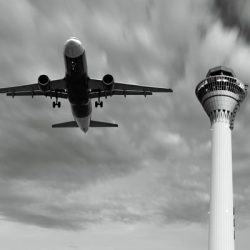EUROCONTROL will continue to run Europe’s skies
EUROCONTROL has been reappointed as Network Manager of the European skies by the European Commission for the next decade.
List view / Grid view


Both are two vital sectors within the aviation industry – all management of arriving and departing aircraft is of course essential for the safety of both passengers and staff.
Furthermore, ATC/ATM has the potential to assist in increasing an airport’s capacity, therefore enhancing revenue generation and traffic growth. By processing flights more efficiently, an airport could increase its output; greatly enhancing its future potential.
Of course this cannot come at a cost to safety, so within this core topic International Airport Review details how airports, air navigation service providers (ANSPs), airport operators and airport authorities are balancing the need for stringent safety policies with the want to increase capacity, using new technologies, automation, updated regulations and revised management systems.
EUROCONTROL has been reappointed as Network Manager of the European skies by the European Commission for the next decade.
EUROCONTROL has seen a rise in the use of A-CDM for enhanced network predictability and reduction of delays, both at the airport and en-route.
As the role of air traffic controllers shifts to a more observatory role, does neuroscience hold the key to ensuring this change doesn't affect air traffic flows?
The same technology NATS used at Heathrow is now being implemented at Toronto Pearson to help improve flight punctuality at the airport.
With the world’s most efficient single runway, Gatwick Airport has already achieved the seemingly impossible of 55 movements an hour. Rowland Hayler, Runway and Airspace Development Lead at Gatwick Airport, reveals how the airport is planning to get even more out of this asset.
In this issue: How can technology increase passenger throughput without added pressure or stresses, how the baggage handling sector is increasingly turning to technology to ensure this important part of the passenger journey evolves, and how Gatwick increases planes in the sky.
IATA has urged the Romanian government to focus on aviation competitiveness as a means to strengthen the economy of Romania, and is pushing for stronger aviation policies in competitiveness across the whole of the EU.
The Airspace Architecture Study will look in the medium- to long-term, and what practical steps would need to be taken to make it a reality to ensure the longevity and efficiency of European airspace.
ICAO Secretary General discusses economic development, safety, and efficiency concerns during recent Tokyo trip.
ANSPs and States need to work towards a more network- and cross-border-focused mindset to ensure a seamless airspace is achieved.
For the first time, air traffic controllers now have real-time data on the position of planes anywhere in the world, including previously unsurveilled airspace.
Johnnie Müller, Security Director, Copenhagen Airports, discusses his highlights from Airport IT & Security 2018 and what he will be looking forward to at this year’s event.
The Civil Air Navigation Services Organisation (CANSO) has launched a best practice guide to help increase operational coordination between aviation stakeholders and enable safer, more efficient air traffic flow.
Airservices Australia has released the final airspace design for Hobart Airport, after extensive community and industry consultation.
The Saudi Air Navigation Services (SANS) have appointed the first women air traffic controllers in a step towards Saudi Arabia's Vision 2030, which hopes to increase employment and diversity.